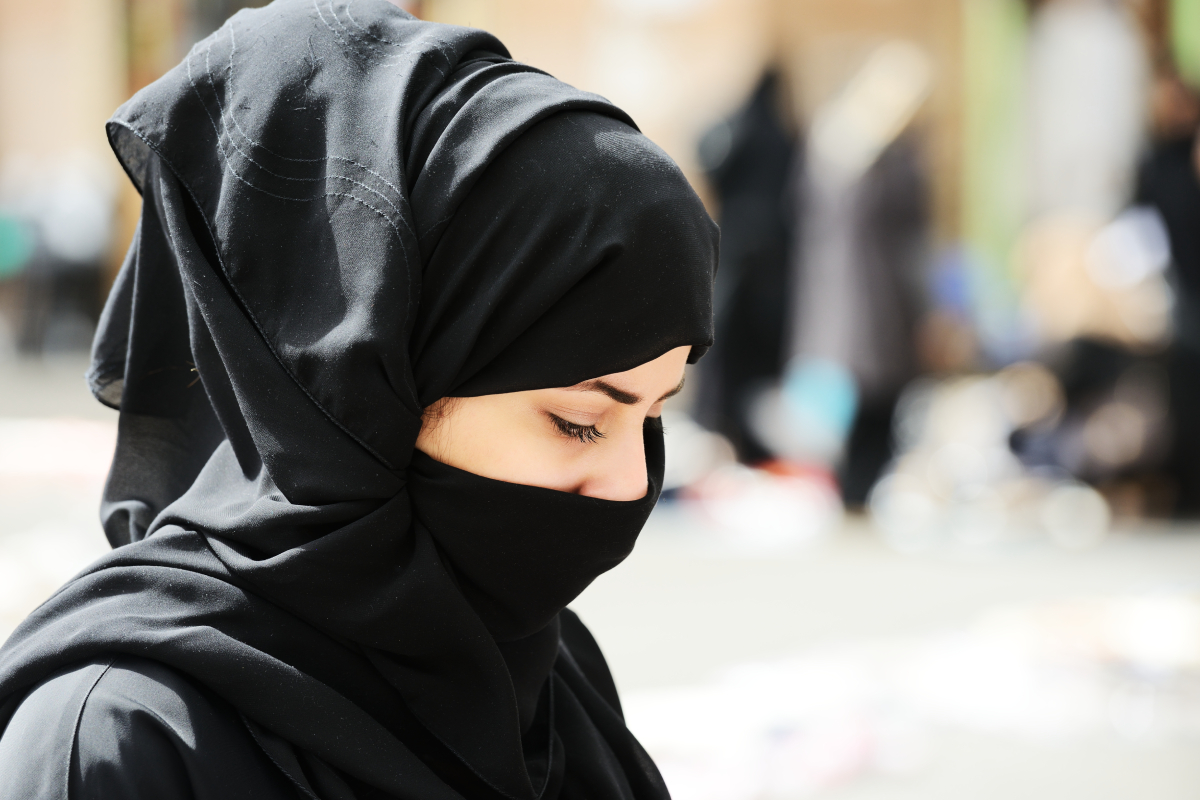The Islamic veil, or hijab, has become a political tool and is a modern phenomenon of the late 1980s and early 1990s vis-à-vis Iran, Afghanistan, Pakistan, Bangladesh and India. The fallout of the Middle Eastern Wahhabi movement, the 1979 Iran Revolution, and the chain of events from the 1973 oil embargo hit all of South Asia, drastically altering its religious, social, cultural and political scene.
The petrodollars coming from the Gulf started showing a visible presence in the rising Muslim presence, clout and real estate in southern India with its mosques and minarets and madrasas, as well as in north India (Kashmir) with a Pakistan-sponsored armed insurgency backed by Islamist interpretations and Deobandi preachers.
The Sunni (Saud Royals), Shia (Iran’s mad mullahs) and the economic geopolitical clout from the oil have had devastating effects on South Asia just healing from its brutal and painful colonial past which divided the subcontinent of India into East Pakistan (The Islamic Republic of Pakistan) and West Pakistan (Bangladesh) – resulting in the bloodiest mass migration in history creating permanent fault lines.
Pictures from before the 1980s and after reveal the transformation of women and men with black veils of various types – burkas, hijabs, niqabs, abayas, beards, skull caps, ankle-displaying trousers, etc.
So any attempt at trying to undo the effects of these geopolitical events seems as if the power, party, or government is trying to further colonise the particular group or community. Any organic movement against the veil in Afghanistan during the Taliban rule, or in Iran with the mandatory laws of the mad mullahs on veiling and their morality police; or in India with petitions in courts against veil as a part of uniforms in educational institutes is seen as a conspiracy against the Muslims and Islam.
Yes, there has been a history of the politics of unveiling women but to term, each and every move – abolishing instant triple talaq, nullification of Article 370 which provided separate constitutions, flags and citizenship to Indian citizens, the CAA for smoothing the asylum-seeking persecuted Hindus, Sikhs and other communities from neighbouring countries – as oppression of minorities or violating the rights of Muslims is dishonest and agenda-driven.
Left-leaning liberals clamouring the loudest for these conspiracies, cite Algeria’s colonial past and the significance of the veil in colonised-colonising relations in colonial Algeria. In the first chapter of his Sociologie d’une Révolution (translated into English as A Dying Colonialism), Frantz Fanon asserts that French colonial officials in Algeria engaged in a war against the veil from as early as the 1930s.
According to Fanon, French colonial officials saw the veil as the barrier between the Algerian colonised society and the French colonial one and believed that colonisation could not be complete without conquering women, which included the removal of the veil: “If we want to destroy the structure of Algerian society […] we must, first of all, conquer the women; we must go and find them behind the veil.” (Frantz Fanon, Sociologie d’une Révolution, 1959).
Muslim women have themselves been the catalysts for demanding changes in the personal Sharia laws that govern them, justifying instant triple talaq, the inheritance laws of J&K vis-à-vis Article 370 (daughters carrying State subject of Kashmir marrying someone without that State subject could not inherit their property), and mandatory veiling. Yet Islamists, with their natural totalitarian and anarchic allies the Leftists, or as we say in India, Urban Naxals, always hijack these organic movements or protests and try to portray them as different forms of fascism or colonialism.
It becomes very difficult to prove credibility and the intention of preserving the self, mind, body and psyche of the Muslim women victims of the misogynistic laws and cultural pressures of veiling as a religious identity in politically charged atmospheres.
The actual harm, that of knee-capping or acid attacks, honour killings, morality policing in the families, of patriarchal repression of the females is gaslighted and only the political compulsions, perceived or real, are highlighted and amplified.
This makes it very difficult for already brave Muslim women to make tremendous sacrifices, building the courage to transcend the “omerta” (silence) that the mob culture of Muslims under the umbrella term “Islamophobia” has developed over centuries, culminating in the “sar tan se juda” (beheading war cry) of today.
The history of the fight to have instant triple talaq (a regressive practise benefiting the Muslim male) banned is a study of how much resistance there is from ‘mad mullahs’ appearing in TV debates and humiliating, patronizing, or outright terrorising the Muslim women at the forefront of those petitions.
To see the rage of the mullahs, Islamic scholars, and experts (Asadudin Owaisi, the self-declared leader of Indian Muslims) in fact walked out of one debate refusing to face a critical Muslim on the accusation she wasn’t Muslim enough -takfirism), it is remarkable that some rational Muslim women and men actually stick their necks out to speak about the regressive practises and Islamism creeping into the Indian ethos.
Of course, imperial powers did use the politics of the veil in Algeria’s decolonising war, colouring up occupation as liberating the Algerian women which the imperial powers termed as “inferior, backward, illiterate, ignorant, and secluded”, to some extent quite right. But it is for those “inferior” people to fight for those rights because anyone who can’t fight for their rights deserves what he/she tolerates.
Like the magnificent Iranian women of today, who are bringing in a revolution for democracy chanting “death to the dictator”. For in the removal of the veil and protests against the custodial murder of a Kurdish-Iranian Masha Amini, they are also fighting for the values we all agree on – justice, liberty, democracy, equality, and emancipation.










